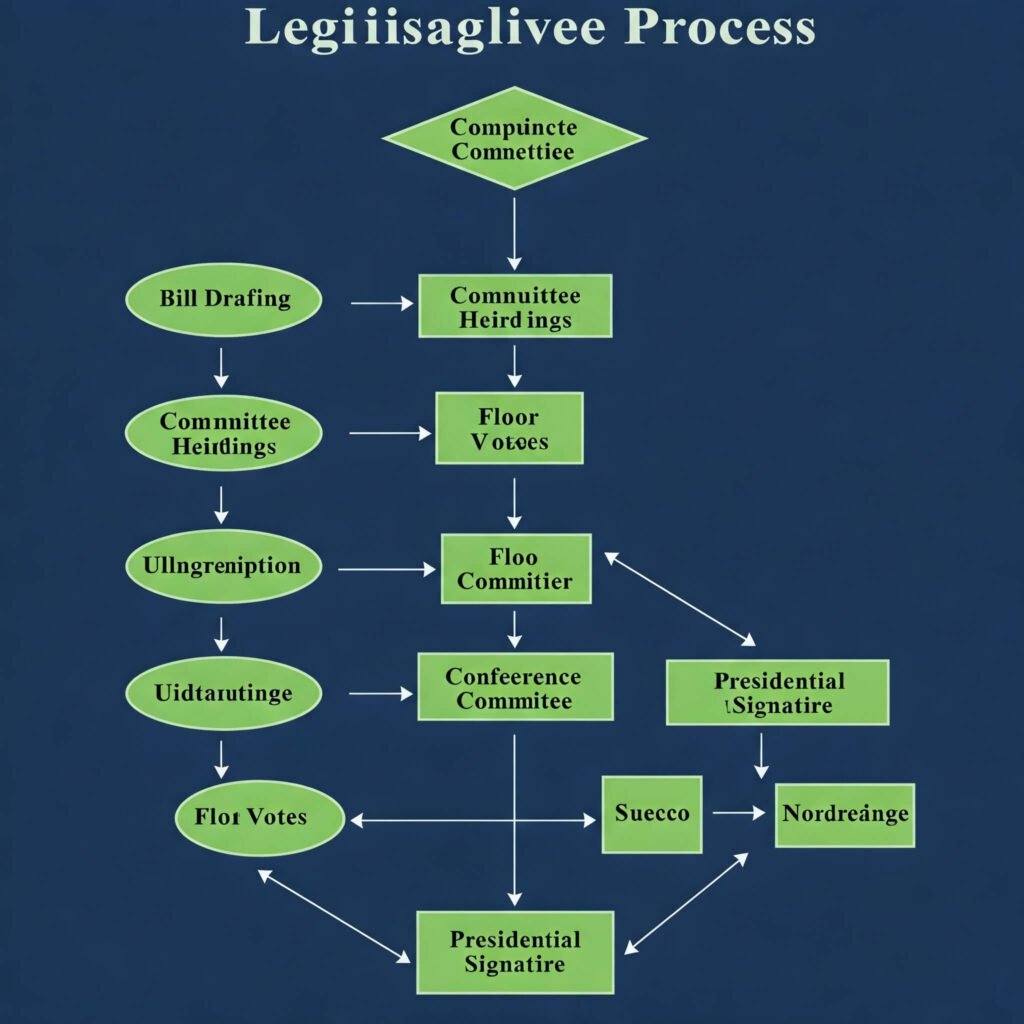Curious about how laws are made? You’re not alone! The legislative process shapes the rules we live by, and in 2025, it’s more dynamic than ever. Furthermore, this crash course will walk you through every step, from a spark of an idea to a signed law, with a peek at how technology is revolutionizing it all. Let’s dive in!
How Laws Are Made: The Legislative Process Unveiled
The journey of how laws are made is like a roadmap with clear stops. Therefore, here’s the step-by-step breakdown:
1. Idea Generation: Where It All Begins
Laws start with ideas—sometimes from you! Additionally, in 2025, citizens pitch concepts via digital platforms, like a real-time suggestion box for Congress. For example, a viral petition for cleaner air could spark a new bill.
- First, Citizen Power: Apps let people propose ideas instantly.
- Second, Lawmaker Lightbulbs: Politicians turn campaign promises into action.
- Third, Expert Input: Think tanks suggest data-backed solutions.

2. Drafting the Bill: Words Take Shape
Once an idea gains steam, it’s crafted into a bill. Subsequently, in 2025, AI tools polish the language, ensuring clarity. For instance, imagine a bill on electric vehicle incentives—AI might streamline it in hours, not weeks.
- First, Precision: Legal terms are carefully chosen.
- Moreover, Tech Boost: AI speeds up drafting with flawless grammar.
- Finally, Teamwork: Lawyers and lawmakers refine it together.
3. Committee Review: The Deep Dive
Next, the bill lands with a committee—experts in areas like healthcare or tech. Consequently, they debate, tweak, and test it. Additionally, in 2025, virtual hearings let global experts Zoom in, enriching the discussion.
- Initially, Hearings: Real-world pros weigh in.
- Then, Edits: Committees fine-tune for impact.
- Finally, Green Light: Approval sends it to the floor.

4. Floor Debate and Voting: The Big Showdown
Now, the full Congress debates it live—think of it as democracy’s Super Bowl. Moreover, in 2025, you can chime in via social media as lawmakers vote. For instance, a bill on climate change might trend nationwide!
- First, Debate: Passionate arguments unfold.
- Second, Public Voice: Your comments influence the vibe.
- Third, Vote: Majority rules to pass it.
5. Presidential Approval: The Final Stamp
The bill hits the president’s desk. Consequently, sign it, and it’s law; veto it, and it’s back to Congress. Furthermore, in 2025, data analytics might show 70% public support, swaying the decision.
- If Yes: Signature seals the deal.
- If No: Veto sparks a redo.
- However, Override: Two-thirds vote can defy a veto.

How Laws Are Made Smarter in 2025: Tech’s Role
In addition, technology supercharges how laws are made in 2025. For instance, AI drafts faster, digital tools amplify your voice, and analytics predict outcomes—making laws more responsive than ever.
- First, AI Efficiency: Cuts drafting time by 50%.
- Second, Citizen Access: Platforms connect you to lawmakers.
- Third, Data Insights: Predicts a law’s real-world impact.
Conclusion: Your Role in How Laws Are Made
In conclusion, now you know how laws are made in 2025! It’s a blend of tradition and tech, with you at the heart of it. Therefore, next time you see a new law, you’ll spot the journey it took. If you want more, explore these trusted sources:

